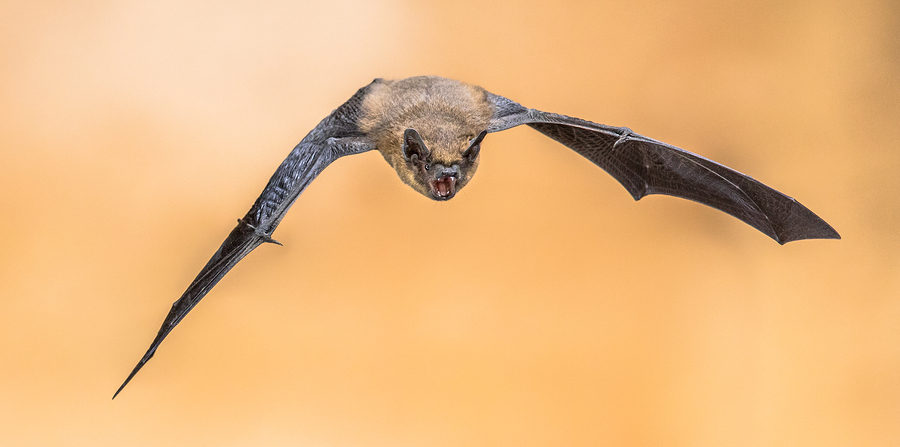It is a common misconception that bats are blind and must use their echolocating abilities to navigate around at night, and basically survive in general. Although there is some truth in echolocation abetting navigation, however, bats are not blind and can see just fine. Even non-echolocating bats in the Megachiroptera suborder have pronounced visual cortex that give them great sight and depth perception. Although bats are not blind, echolocation is a vital resource for microbats, and provides them with benefits that sustain their lives.
Continue reading to learn more about bat echolocation.

Bats and Echolocation
Echolocation is also referred to as “biosonar”, and is a utilized by bats in the Microchiroptera suborder, also known as “microbats.” It is a built-in biological system that works by measuring the returning echoes of emitted signals that bounce off surrounding objects. Echolocation is made possible through vocalizations that are produced by the larynx of microbats, but released through mouth and nostrils. There are a few species of Rousettus in the megabat suborder that use a similar sonar system to microbats, but in contrast to producing sounds in the larynx, they produce sounds by clicking their tongues. See our blog, “The Basic Principles of Echolocation in Bats” to learn more.
How it Echolocating Works
When bats use echolocation, they emit signals in ultrasonic pulses over 15 kilohertz which then travel through the air and bounce off of surrounding objects. Bats analyze the returning sounds to identify the objects and assess the distance between them. The type of signals and sounds emitted by echolocating bats differ among species in many aspects, including frequency, length of call, intensity, and degree of modulations. Many animals aside from bats use this type of built-in sonar system, including species of dolphins, porpoises, toothed whales, Killer whales, dwarf sperm whales, shrews, and some species of bird.
The Purpose of Echolocation
Bats can see, but echolocation gives them a superior advantage when it comes to hunting and diving for prey at night. Bats are insectivorous, which means they primarily eat insects that are small and fact, like moths, flies, mosquitoes, beetles, and more. With echolocating abilities, they can more accurately dart, dive, and dash for their prey when it’s dark. It also helps them navigate their way around dark caves and roosting areas. Think about it from this perspective: You can see just fine, but you can’t see very well at night. Bats are the same way, but they have a built-in sonar system that makes up for this disadvantage!
Nuisance Bat Problems?
Bats are an incredible mammal, and offer numerous benefits to our surrounding environment and ecosystems. However, if you are experiencing nuisance bat problems, contact a Kentucky bat removal and control company for safe and humane service.
Louisville Bat Removal and Control
Call 502-553-7622 for prompt and professional Louisville bat removal and control you can trust. We are DNR licensed and insured wildlife rescue and control professionals with more than two decades of experience working with bats. We offer residential and commercial abatement services, including minor attic restorations for bat damages. Request a free estimate, today.

